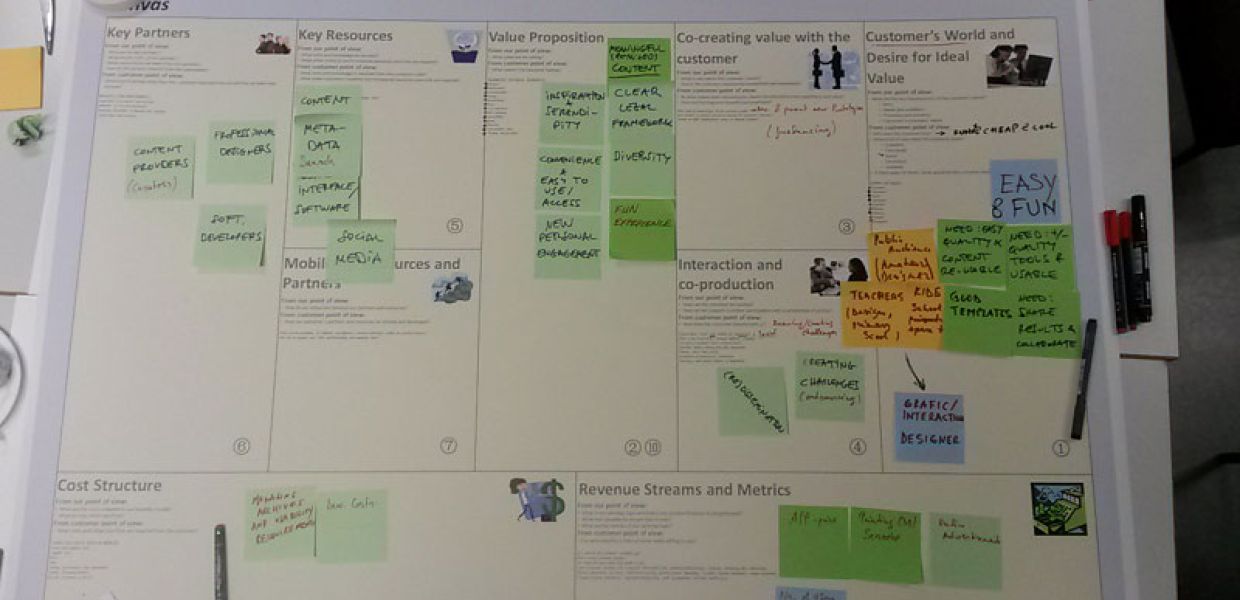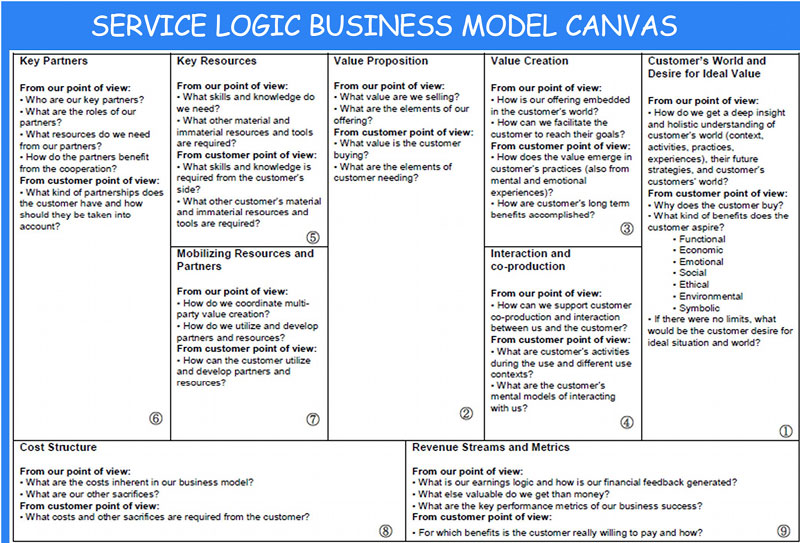Business Model Workshop for Design Applications Re-Using Europeana

On the past 23rd May, the last Business Model Workshop was organised in Helsinki, at the Media Lab of the Aalto University. In the same fashion as the other editions, the aim was to trigger a discussion on how to develop a business model that underpins and encapsulates the successful reuse of digital cultural heritage content like in this case via Europeana -this time as far as Design-specific applications are concerned.
The business models were related to the concepts identified in the co-creation workshop, which preceded the organisation of the business model one. The projects which presented the best potential were further explored, and translated into viable products or services.
A business model refers to how value is created, delivered and captured within an organisation point of view. Value takes several forms such as cultural, economic, social, environmental, etc. (thus not being limited to a common perspective that refers only to for profit businesses). It can be developed not only within organisations but also specific projects, products or services.
This specific workshop resorted to the business model canvas methodology to provide a framework and a guideline on how the “Design” pilot can be explored in a sustainable way, while at the same time provide “inspiration” for the challengers.
An expert on business modelling was invited to guide and support discussions. Jukka Ojasalo (adjuct professor at AALTO University) introduced the Service Logic Business Model Template, an own developed version of the original Business Model Canvas by Osterwalder and Pigneur. The Service Logic Template emphasises a deeper understanding of implicit and explicit customer needs. According to the author, the focus of this canvas is strongly on the perspective of the customer, and not on the company.
The business canvas that was used for this workshop takes into account 9 elements:
- Customer’s World and Desire for Ideal Value
- Value Proposition
- Co-creating value with the customer
- Interaction and co-production
- Key Resources
- Key Partners
- Mobile Resources and Partners
- Cost structure
- Revenue Streams and Metrics

Source: Ojasalo, Katri and Jukka Ojasalo (forthcoming 2014), “Adapting Business Model Thinking to Service Logic: An Empirical Study on Developing a Service Design Tool,” in The Nordic School – Alternative Perspectives on Marketing and Service Management,
3 prototypes were developed after the co-creation workshop using the Service Logic Business Model Template:
-
Pattern Gems: through this prototype service, professional-amateurs in design can find high quality reusable images which can inspire them to create and share new patterns for clothing, furniture, interior design etc. that are printable on a broad range of different design products (e.g. chair, wallpaper, T-shirts, jackets);
-
eFab: this prototype offers an environment for designers, DIYers and students to make Europeana content digitally "makeable" by use of 3D-printers and laser cutter. The final product - the digitally fabricated object - can be used for for example decoration, to build theater stages or to sell in museum shops.
-
Collage: this prototype is a customisable online tool and mobile application targeted at a general public and design professionals that allows new masterpieces to be created from the reuse of works of art, in a fun and pedagogical way. Europeana content can be accessed, transformed and placed for public viewing and rating. Own creations can also be uploaded and used to mix heritage and new content.
As an example of the very interesting thought process in the workshop, a business model called “Pattern Gems: Create your own patterns from vintage images” was developed.
Pattern Gems’ business model can be translated as a service targeted at professional-amateurs (Pro-ams) in design/creators/makers; students, amateurs that like to create patterns and have the ambition to go from amateur to professional level. Designers are offered a very smart search tool (enabling search on similarity, color, forms etc.) through which they can search through inspirational Europeana content (example collections, e.g. high quality cut-outs of butterflies from different paintings).
The revenue is generated by sharing sales of design patterns with registered designers. It also liaises with external related services that are already on the market, like platforms where fabrics can be ordered and professional tools and services that you can use to mask and cut images (e.g. Adobe InDesign).

View of the filled-in Service Logic Business Model Template
